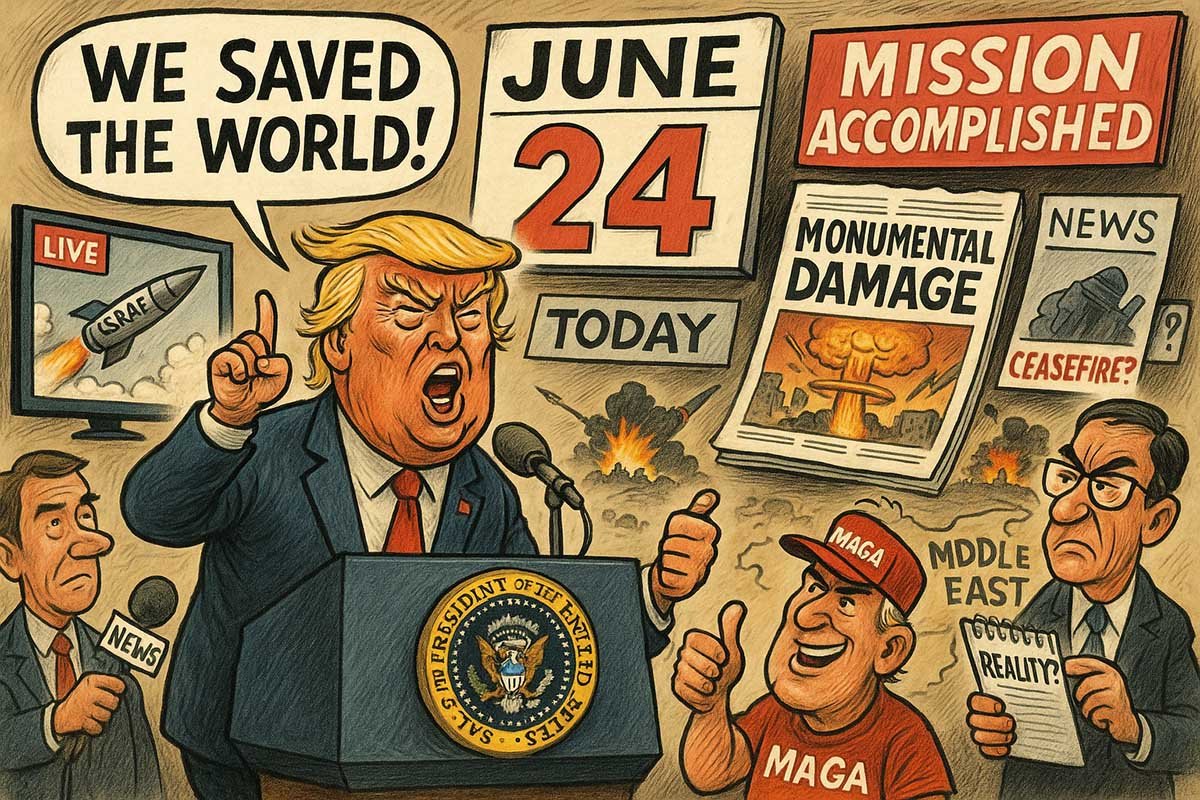The Trump administration’s handling of the spiralling crisis between Israel, Iran, and the US is continuing to produce both headline drama and questions about the nature of reality itself. Less than 24 hours after Donald Trump announced that “monumental damage” had been inflicted by US strikes on Iranian nuclear sites, the only certainty is the persistence of uncertainty. The White House, once again, has become both stage and war room, with Trump and his MAGA entourage shaping global headlines as easily as they rewrite their own talking points.
According to multiple sources, Trump insisted that the American air campaign delivered “exactly what was needed,” even as outside analysts urged caution and pointed to the risk of escalation. With Iran and Israel continuing their own exchange of missile and drone attacks, the American president’s claims of “ceasefire” or diplomatic breakthroughs have repeatedly clashed with statements from both Tehran and Jerusalem—neither side officially confirming any end to hostilities.
In classic fashion, Trump declared victory before the dust had settled, touting the destruction of key Iranian facilities and asserting that the US had “saved the world” from further nuclear escalation. Independent verification has proven elusive, with BBC and Reuters both reporting that evidence from the ground in Iran remains partial, satellite images inconclusive, and military sources tight-lipped.
While the White House press corps and international analysts picked apart the shifting narratives, Trump’s allies presented the president’s handling of the crisis as proof of “unmatched leadership.” Others, including former senior officials and Western diplomats, warned that the US is now more deeply entangled in a regional conflict than at any time since the 2003 Iraq invasion—one that is “currently underway,” with no clear off-ramp.
The situation has been further complicated by Trump’s budget demands and ongoing wrangling at the NATO summit, where European leaders appeared less interested in applause for US airpower than in emergency meetings about next steps. As the Security Council mulls action and Moscow and Beijing signal their own strategic discomfort, the world is forced to decode reality one statement at a time.
Trump’s preferred reality—one where “peace” is only a presidential announcement away—remains at odds with events on the ground. Even as new reports surface of Iranian retaliation and Israeli counterstrikes, the administration insists on a narrative of calm and control. Yet, for every claim of “ceasefire,” there is a denial, and for every declaration of “mission accomplished,” a new round of explosions.
The result? A day of bombast, bluster, and blurred lines—one that will be dissected long after the next White House briefing redefines, re-spins, or outright reverses the facts on the ground. Welcome to June 24th in Trump’s America: the war may or may not be ending, but the story, for now, is only getting stranger.
